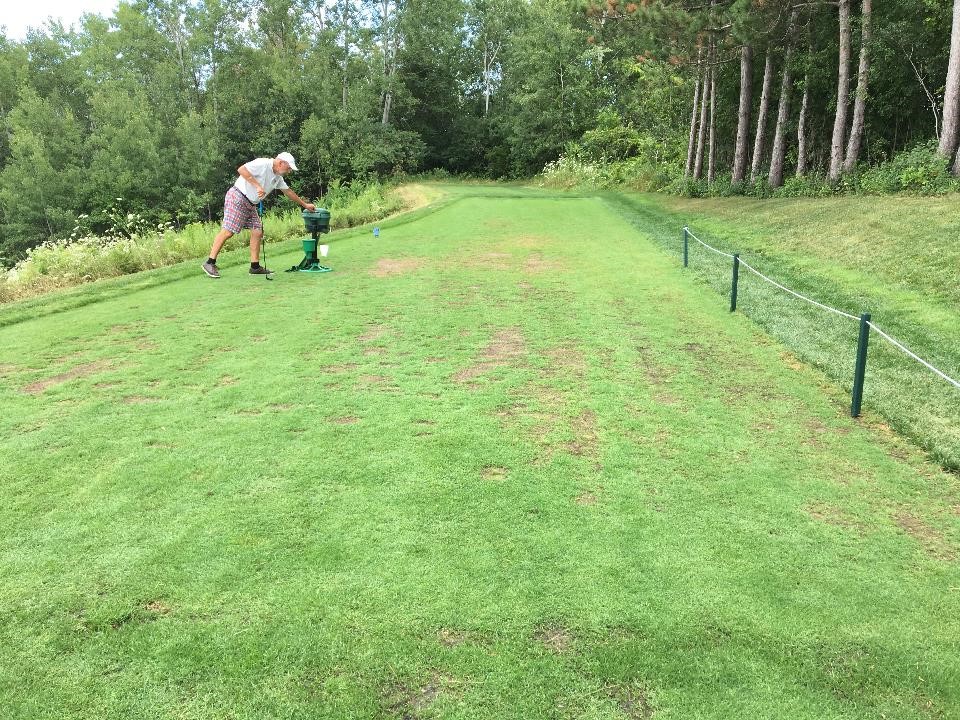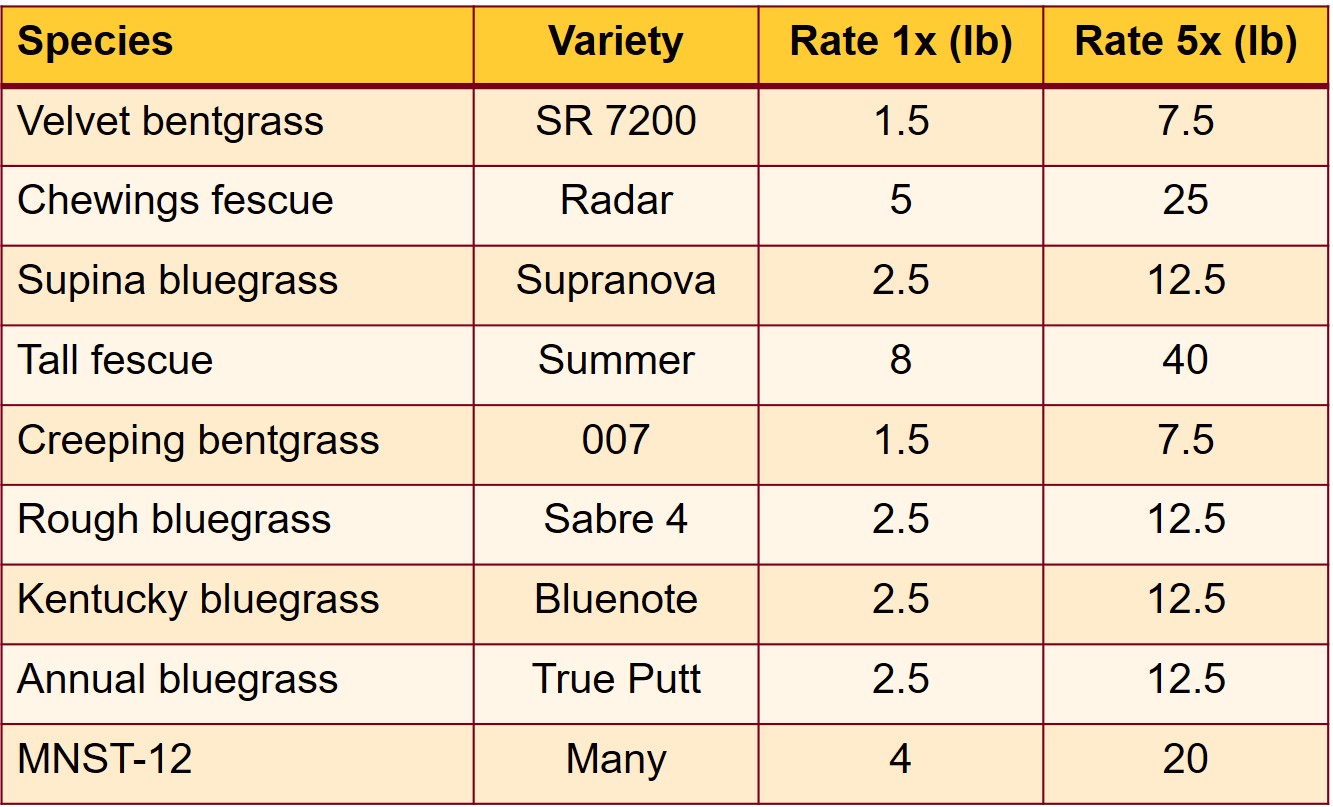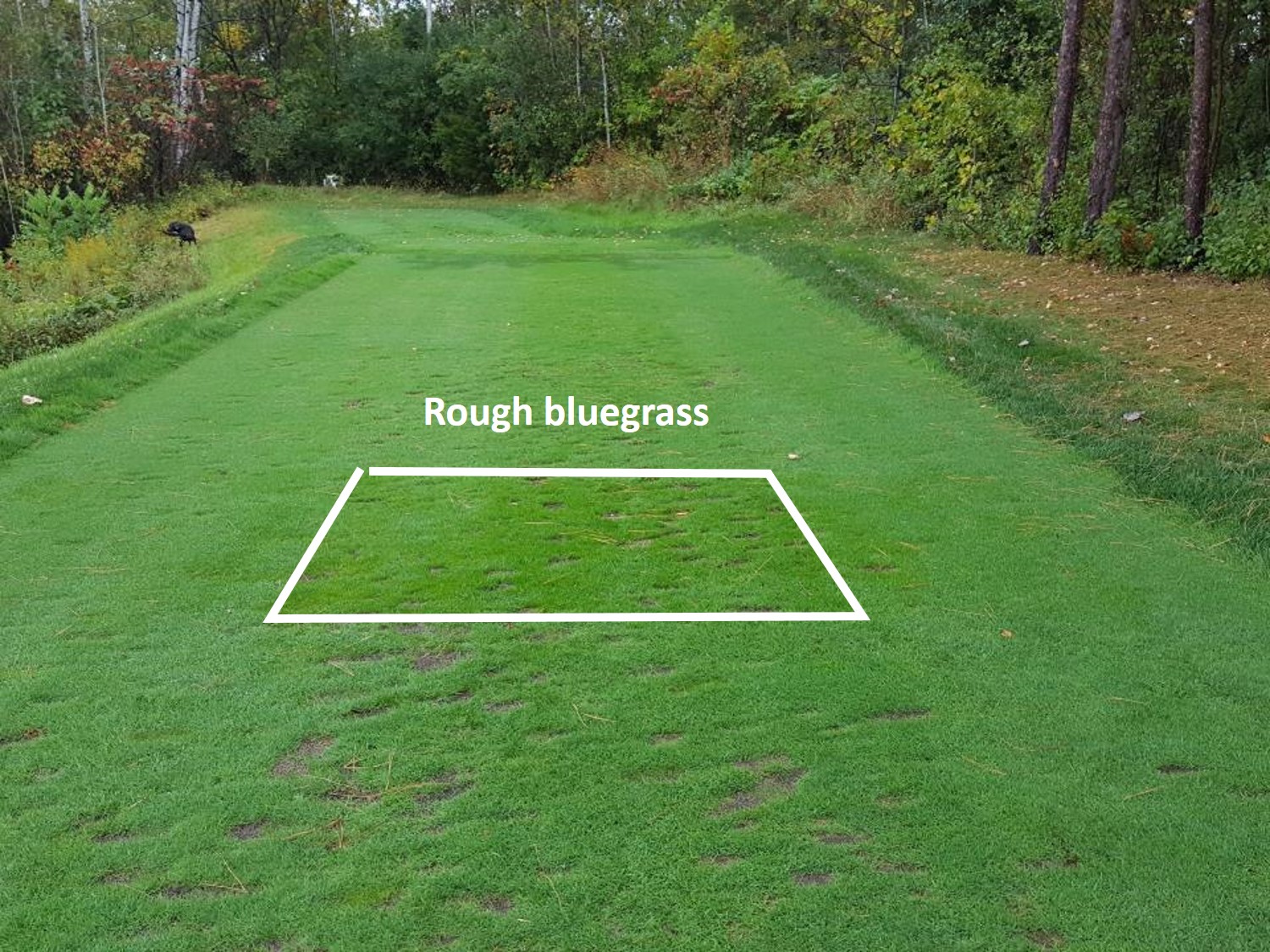Creeping bentgrass (Agrostis palustris) is a stolon-forming cool season grass commonly used on golf courses. It has good shade tolerance, but if shaded, it will also need good drainage to thrive. One of our MGCSA-member partners recently experienced what can happen when creeping bentgrass grows in shady and poor drainage conditions.
A newly-constructed creeping bentgrass tee opened for play in mid-summer of 2017. The site had morning shade caused by trees, which were off-limits to cut down, on adjacent property. In addition, the tee had poor surface and subsurface drainage. This led to algae and other diseases, along with excessive damage from foot traffic and golf club divots. After one month, the creeping bentgrass was seriously deteriorated.
Research question
How well would other turfgrass species or different planting rates work in this situation?
Study location
Stillwater Country Club (Superintendent – Marlin Murphy)
Treatments
The treatments (listed in the table below) consisted of eight species and one mixture, and 2 seeding rates.
Findings
Despite being known for having an “off’ yellowish-green color, we found that rough bluegrass provided the overall best results compared to the other species. Across all treatments, higher planting rates increased the level of establishment.
Takeaway
Rough bluegrass appeared to be the best option so we recommend trying this species for this specific situation. Supina bluegrass (Poa supina) could be used as well.
Contact Maggie Reiter, Extension Educator - Turfgrass <[email protected]> for more information on this program.


